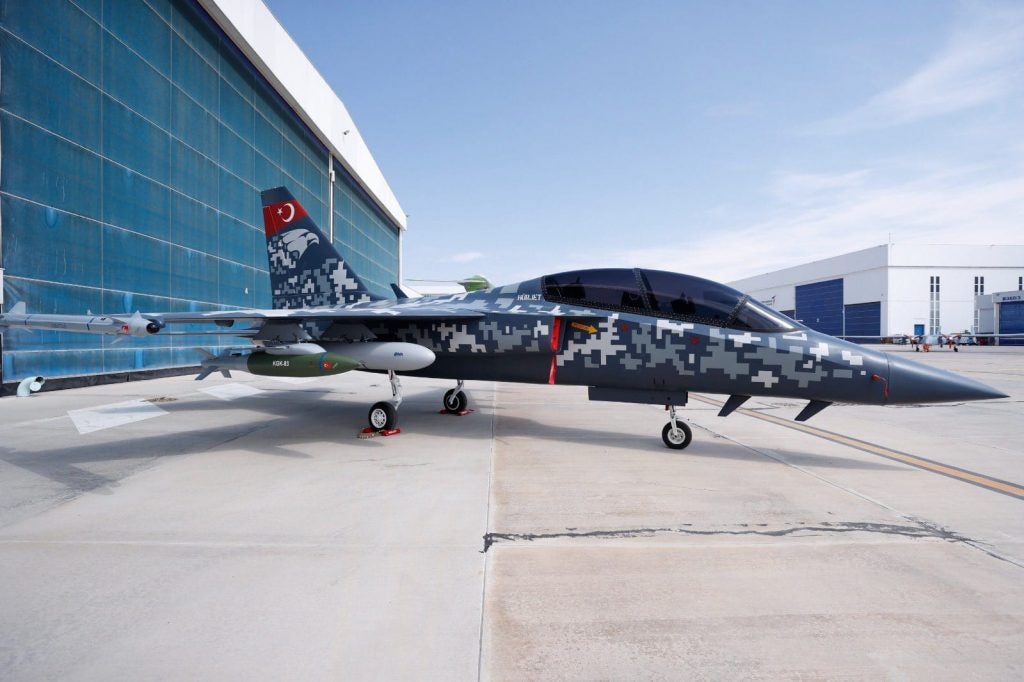TAI HURJET Jet Trainer and Light Attack Aircraft Completes Its First Engine Test
Another significant milestone has been reached in the HURJET project, Turkey’s domestic jet trainer and light attack aircraft. In this context, Turkish Aerospace Industries completed engine integration on the first Hürjet prototype, and the engine was started for the first time. As a result, HURJET officially began ground tests. Prof. Dr. İsmail Demir, President of the Turkish Defense Industry, announced the HURJET engine starting test to the public. Defense Industry President İsmail Demir issued a statement on his official Twitter account, saying, “as the Turkish defense industry, our work continues at full speed in the 100th anniversary of our Republic. Hürjet started its engine! Now it’s time to fly!”. A statement made by TAI regarding the development read, “We are happy to fulfil our promise to our nation. HÜRJET has started its engine, and it will soon take its place in the skies.”
TAI management chose General Electric’s F404-GE-102 turbofan engine for the Hürjet prototype, which is also used in single-engine jet trainer and light attack aircraft such as the Boeing-Saab T-7 Red Hawk and KAI T-50 Golden Eagle. Although the company initially intended to produce a domestic engine for Hürjet, it signed a contract with General Electric for the F404 engine, which the domestic engine could not keep up with. It is unknown how many engines TAI has ordered as part of the agreement. However, because domestic engine development is expected to continue until 2026, it is expected that the GE F404 Turbojet Engine will be used in the first mass production aircraft, in addition to the HÜRJET prototype aircraft.

With the engine installed, the first Hürjet prototype will begin ground tests in the coming days. At the same time, durability tests of the HÜRJET Static Test Aircraft, which has the same configuration as Hürjet’s prototype, will be performed, and any aerodynamic load that the aircraft may be exposed to during flight will be applied to the airframe. Hürjet’s first flight is scheduled for March 18, 2023, following the successful completion of ground and static tests. Following the completion of the tests and development activities, TAI aims that Hürjet will be able to enter the inventory by 2025. In recent months, the Turkish Defense Industry Executive Committee made the decision to order 16 Hürjet aircraft for the Turkish Air Force Command. Turkish Aerospace Industries intends to expand its production capacity later and deliver two Hürjets to the Turkish Air Force each month.

According to TAI, the single engine and tandem cockpit Hürjet will measure 13.6 meters in length, 9.5 meters in wingspan, and 4 meters in vertical tail height. It will be capable of in-flight refueling, automated flight, a heads-up display, and aircraft systems that are compatible with the pilot’s augmented reality helmet. The aircraft will have a top speed of Mach 1.4, a range of 2,592 kilometers, and the capability to fly at heights of up to 14 thousand meters. Hürjet’s armed variant features seven weapon stations. The Hürjet is designed to be able to carry virtually all domestically developed air-deployed missiles and bombs, including Gökdoğan and SOM, with three weapon stations on each of the wings and one under the fuselage. Also on board will be a high-precision 20mm gun that was produced domestically.



